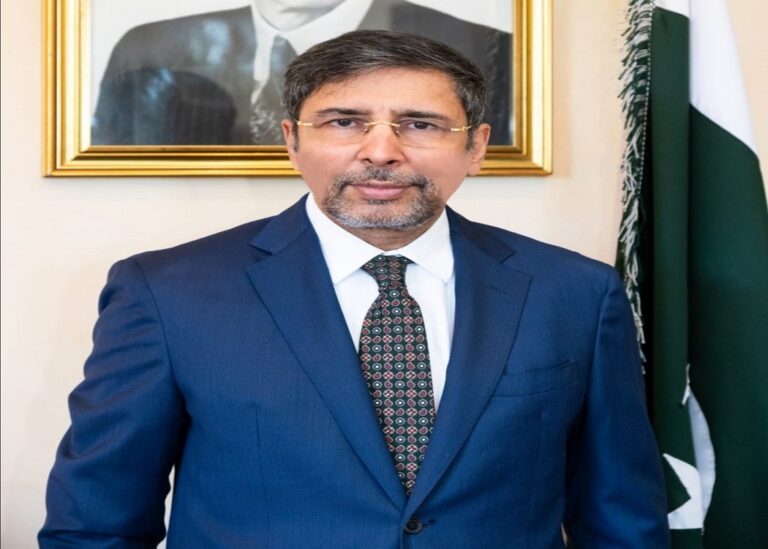Looming Gas Crisis and Solutions
Aftab Ahmed
As the country is said to face a worsening gas crisis in the winter season, imported gas may be a solution to minimize gas consumers’ miseries.
During the last two winter seasons, the government had overcome the gas crisis. Still, it led to a rise in circular debt by Rs 73 billion due to the diverting of imported gas towards domestic gas consumers.
The SSGC System is likely to have a shortfall of gas supply of about 350-500 mmcfd during the coming winter.
The SNGPL System is likely to have a shortfall of 700-1,000 mmcfd during the coming winter. This will create huge problems for the industry and domestic consumers of gas.
The projected shortfall of natural gas for the next 5 years
If the two existing terminals are utilized at 1200 mmcfd, the gap between the demand and supply of gas, without any major discovery in the country, will rise to 2000 mmcfd on a base-case scenario and up to 3000 mmcfd on an optimistic scenario.
How to eliminate/alleviate the natural gas crisis
The government can take immediate measures to eliminate the gas crisis within 60 days to 180 days.
- To ensure that the contracted capacity of 1200 mmcfd on the two FSRUs is fully utilized.
- Enar Petrotech (a Government entity) to be tasked to determine the exact capacity of the SSGC pipeline from Custody Transfer Station(CTS) at Port Qasim to Pakland and the actual capacity in RLNG-II Pipeline. According to earlier computer simulations, the pipeline system can deliver around 1350 mmcfd instead of the SSGC position that it can deliver only 1200 mmcfd. This can be done within a fortnight and will create space for transportation of gas to the north.
- The PGPC pipeline and the K-Electric (KE) Injection Point are approximately 500 meters. FOTCO has the right of way and the license for the construction of a transmission line. The same can be done in 60-90 days.
- Using this new interconnection between PGPC and KE, PGPC can deliver 100-150 mmcfd directly to KE at a negotiated price, as permitted under LNG Policy. The supply can start within 90 days.
- PGPC FSRU can be tested for up-grading capacity up to 900 mmcfd, without leaving port and without interrupting supplies (except for 4 hours) within 4 days. This testing should be immediately allowed, and if the additional capacity is available, PGPC should be allowed to utilize the same for private-sector sale immediately.
- Engro Terminal can substitute its existing FSRU with a higher capacity FSRU, as permitted in the Agreement and LNG Policy. This can bring another 100 mmcfd of gas.
- Maximum swapping capacity between SSGC and SNGPL systems to supply more gas to the north. Enar Petrotech should be tasked to determine the swapping capacity between SSGC and SNGPL independently. This can be done within 15 days.
- LPG is a lifeline for customers who do not have access to pipeline gas and pipeline customers when there is gas load-shedding. The country’s production of LPG can go up by 16.67% or about 400-500 MT per day in 48 hours by restarting the state-of-the-art Jamshoro Joint Venture Limited (JJVL). The Federal Cabinet approved the restart of the Plant on August 31, 2020. Still, despite the delay of about 4 weeks, the Ministry of Law and the Ministry of Energy (Petroleum Division) have yet to complete the plant’s formalities. JJVL meets the energy requirements of over 600,000 homes.
Mid-term solutions
To use Gwadar Port for immediate import of LNG and distribution to Sindh and Karachi through containers/bowsers is an option. The Gwadar International Terminals Limited (GITL) has, in principle, allowed Pakistan GasPort Limited (PGPL) and Al-Qasim Gas to utilize Berth-3 to moor an FSU for direct unloading into containers/bowsers through a header arrangement under safe conditions.
- This would require the removal of certain regulatory restrictions from the OGRA/ Explosives Department.
- 100-150 mmcfd of LNG can be brought in at Gwadar, and no pipeline is required for transporting it to Sindh and South Punjab. Apart from the gas becoming available, it will spur Gwadar’s economic activity, transportation activity, and employment in Sindh and South Punjab.
- Another major advantage of this project is that as LNG will be delivered directly to consumers and not through the SSGC/SNGPL pipeline, it will benefit the consumer by saving 15-17% Unaccounted for Gas (UFG) charged by the two Sui companies to consumers of gas.
- The Project can be up and running in 240 to 360 days. All necessary arrangements are in hand. Action required is convening of a meeting between OGRA, Ministry of Petroleum, Explosives Department, and the Sponsors, i.e., PGPL and Al-Qasim Gas.
- Long-term solutions: (400 days to 1095 days)
- Additional LNG Import Terminals:
Last month, the Federal Cabinet directed the Ministry of Defence to allow a NOC for the location in Port Qasim for the construction of two additional LNG Terminals. The terminals are indeed needed but will require at least 30-36 months for completion.
Yet, a project which is completely ready for the start of construction has achieved the following milestones is not allowed to proceed:
- A NOC from the Ministry of Defence
- The PQA Board in its meeting of December 6, 2017, reiterated that “The Board resolved to re-confirm the request for NOC with the condition that the specific site/location will be subject to adjustment, after relevant studies about the realignment of the channel since the proposed site may be in the remodeling zone.”
- The land has already been leased, and rental is being paid for many years.
- All requisite Studies are ready.
- A construction contract has been signed with a Chinese Company.
- PQA’s own Consultant, HR Wallingford, has recommended that our Site is the most suited for the quickest and safest implementation of the LNG Terminal.
- EPC Contractor has undertaken to complete the project in 10 months from groundbreaking.
- Among the reasons that the Terminal can be commissioned within 10 months is also the fact that our pipeline from the jetty to the CTS is already available and is capable of transporting up to 1.3 bcfd (only the interconnection between the two jetties – PGPC Terminal-1 and Terminal-2 is required).
- The Project is being funded through equity and requires no government guarantees for off-take of gas. The Sponsors are taking the entire risk.
The FID for the project is not dependent on the gas transportation pipeline capacity allocation upfront. The Project will be completed on a risk basis by the Sponsors, and the government should allocate pipeline capacity in due course.
PGPL/PGPC seeks no monopoly, and Port Qasim Authority (PQA) should encourage competition by allowing at least three more terminals.
Construction of South-North pipeline (LNG-3)
It is important for the Country that this pipeline is constructed on a fast track. It has already been over-delayed. The options are:
- Construction through Russian help, already under consideration by the government. The strategic importance of Russian help should be weighed against the additional cost and higher tariff than a local solution.
- The two Sui companies can be tasked to construct the pipeline in their respective areas by replicating the model of RLNG-2. It is easier for them to get the right of way, and also there will be no long-term foreign exchange outflow. In a terminal owned and operated by the two Sui companies, the transportation tariff will be substantially lower than if it were given to a foreign company.
- A 42” pipeline is proposed as RLNG-3. This will carry only 1.2 bcfd, and there will again be a shortfall over the next 3-5 years. To overcome this, an independent consultant’s report should be obtained to increase the pipeline diameter to 56” as the right of way. The cost of laying the pipeline will be the same. The country can gain a higher gas transportation capacity at a reduced cost by using a bigger diameter pipeline, which will also serve as strategic storage.
- Additional LPG production
The country has the possibility to produce another around 500 MT of LPG per day. The same is not being done due to bureaucratic red tape and discouragement for the local production of LPG. A direction should be given that all available LPG in the country should be extracted on a fast-track on a specifically agreed timeline.








